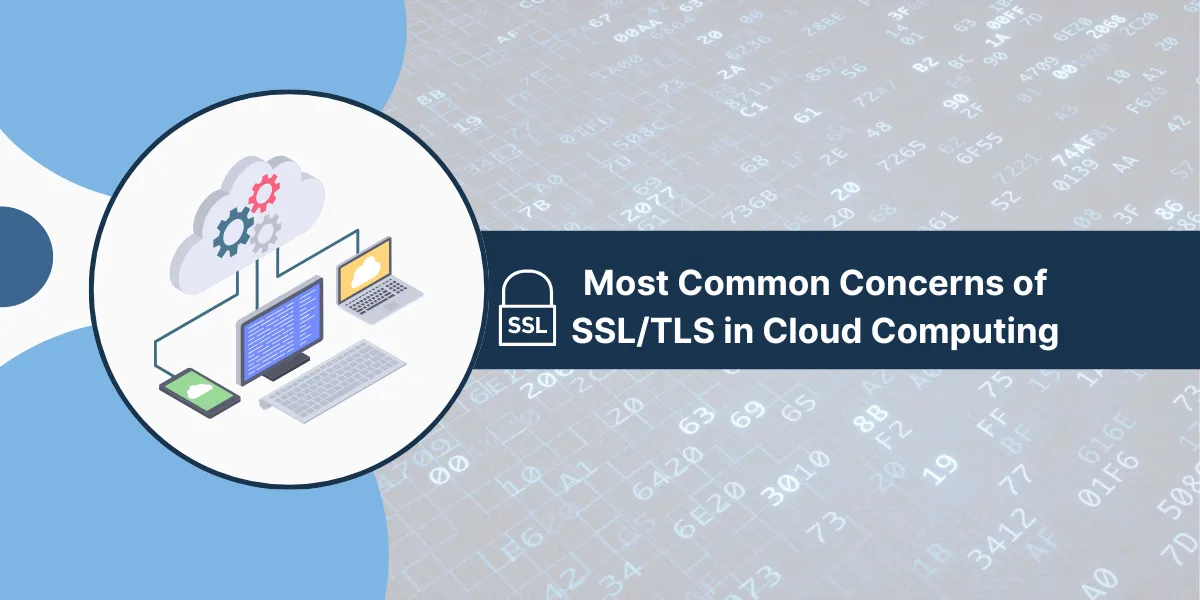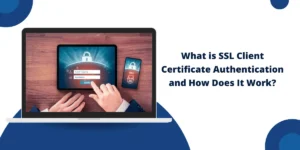SSL/TLS Certificate Management in the Cloud
Companies have been turning more towards cloud computing for their day-to-day activities, raising a question. How can businesses safeguard their data when utilizing cloud services? The solution lies in the adoption of SSL (Secure Sockets Layer) and TLS (Transport Layer Security) protocols are essential in securing confidential data transferred online.
Though crucial for security measures in cloud environments, organizations must not overlook the typical worries connected with incorporating SSL/TLS protocols into their systems; comprehending and addressing these concerns is vital for protecting data and upholding trust levels with clientele.
6 Top Security Concerns with SSL/TLS in Cloud Environments
Here’re the 6 security concerns with SSL/TLS in cloud environments, including potential vulnerabilities and challenges in ensuring secure communication.
- Data Privacy and Integrity
- Certificate Management
- Compliance and Regulatory Requirements
- Performance Impact
- Configuration Issues
- Shared Security Responsibility
1. Data Privacy and Integrity
When you’re working with cloud services, one important thing to keep in mind is protecting the privacy and security of your data. SSL/TLS protocols play a role in this by encrypting data as it is transmitted, preventing individuals from accessing it. However, the organizations must handle their encryption keys with care. If these keys are compromised, hackers can. View the data being transmitted. To ensure security, it’s essential to follow practices for managing encryption keys, such as changing them and using secure hardware devices like hardware security modules ( HSMs ) to store them safely.
Enhancing your security is possible by employing tools such as ExpressVPN for PC. These tools protect the data shared between your device and cloud services using encryption to prevent entities from intercepting the communication.
2. Certificate Management
Managing SSL/TLS certificates can pose a challenge in cloud settings as they must be issued and renewed properly to uphold connections securely. A prevalent worry involves expired or misconfigured certificates that could result in service disruptions or potential security risks.
Businesses ought to explore automated systems for managing certificates to simplify the process and guarantee that all certificates remain up-to-date and properly set up consistently.
3. Compliance and Regulatory Requirements
Numerous sectors are bound by rules governing the safeguarding of information. For example, healthcare institutions must follow the Health Insurance Portability and Accountability Act (HIPAA), and companies that deal with information, such as Facebook, must abide by the General Data Protection Regulation (GDPR).
Ensuring adherence to regulations can be quite challenging for organizations since they not only have to set up SSL/TLS but also properly document their security protocols and prove compliance with requirements through audits and assessments to pinpoint any potential gaps and ensure that security measures remain current.
4. Performance Impact
Securing data through SSL/TLS is important. It may affect performance well due to the delays caused by encryption and decryption processes, which can slow down applications and impact user experience.
Many companies are concerned about balancing security and performance issues within their operations. One way to tackle this challenge is by implementing methods like TLS session resumption. This approach enables both clients and servers to recycle existing connections by setting up secure connections each time, thereby cutting down on the resources needed for creating secure connections from scratch.
5. Configuration Issues
Misconfigurations often lead to security vulnerabilities in SSL/TLS setups, which can put organizations at risk with errors like using old encryption methods or neglecting HTTPS enforcement measures in place. Regular security evaluations and penetration tests play a crucial role in detecting and resolving configuration problems important for organizations to keep abreast of the latest best practices and updates regarding SSL/TLS to maintain secure configurations.
6. Shared Security Responsibility
In cloud setups and configurations, maintaining security involves an effort between the cloud service provider like Google Cloud and the organization utilizing their services. This arrangement sometimes causes uncertainty regarding who holds the responsibility for securing SSL/TLS implementations. Organizations need to grasp their duties and collaborate effectively with their cloud service provider to guarantee management of all security aspects, including SSL/TLS. Establishing communication channels and conducting reviews can aid in addressing this issue effectively.
Final Thoughts
SSL/TLS protocol security issues are crucial for safeguarding data during transmission. Organizations must tackle them effectively to ensure the protection of their data in the cloud environment mentioned in this article. This will enhance their security stance in cloud computing environments and thereby establish trust with their clients and stakeholders by utilizing cloud services.

Priya Mervana
 Verified Web Security Experts
Verified Web Security Experts
Priya Mervana is working at SSLInsights.com as a web security expert with over 10 years of experience writing about encryption, SSL certificates, and online privacy. She aims to make complex security topics easily understandable for everyday internet users.



